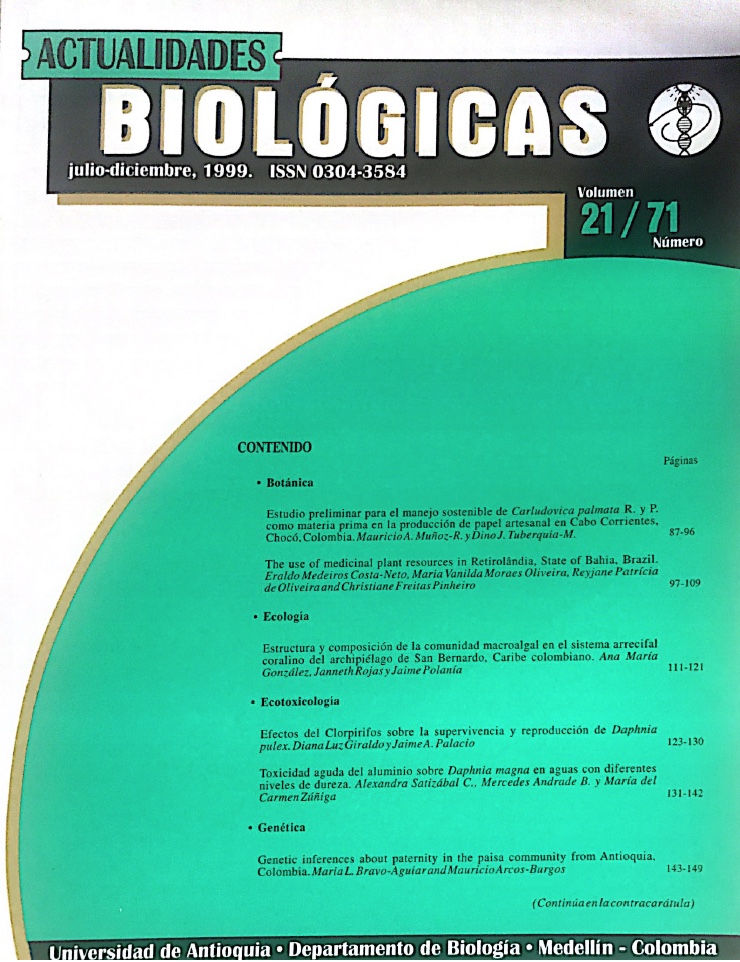Theories on the evolution of Rhodnius
DOI:
https://doi.org/10.17533/udea.acbi.329778Palabras clave:
Chagas disease, Rhodnius, Psammolestes, evolution, population geneticsResumen
Current methods of Chagas disease control rely mainly on elimination of the domestic vector populations. Domestication of these insects has clearly been a recent event in evolutionary terms, associated with a series of genetic and phenetic changes, and this paper reviews current knowledge about the sequence of events leading to the domestication of species of Rhodnius that are important vectors of Chagas disease in the Andean pact and Central American countries. Available evidence suggests that species of Rhodnius have radiated from an ancestral source in the Amazon region, giving three main adaptive lines: southwards into the cerrados of Brazil, northwards into the llanos of Venezuela, and northwestwards through the Andean Cordillera into the Magdalena valley of Colombia. There has also been specialisation within the Amazon forest itself. The form of radiative adaptation is predicted from morphological and biogeographic characters, and subsequently supported by a series of morphometric and genetic markers including mtDNA sequence analysis.Descargas
Descargas
Publicado
Cómo citar
Número
Sección
Licencia
Los autores autorizan de forma exclusiva, a la revista Actualidades Biológicas a editar y publicar el manuscrito sometido en caso de ser recomendada y aceptada su publicación, sin que esto represente costo alguno para la Revista o para la Universidad de Antioquia.
Todas las ideas y opiniones contenidas en los artículos son de entera responsabilidad de los autores. El contenido total de los números o suplementos de la revista, está protegido bajo Licencia Creative Commons Reconocimiento-NoComercial-CompartirIgual 4.0 Internacional, por lo que no pueden ser empleados para usos comerciales, pero sí para fines educativos. Sin embargo, por favor, mencionar como fuente a la revista Actualidades Biológicas y enviar una copia de la publicación en que fue reproducido el contenido.












